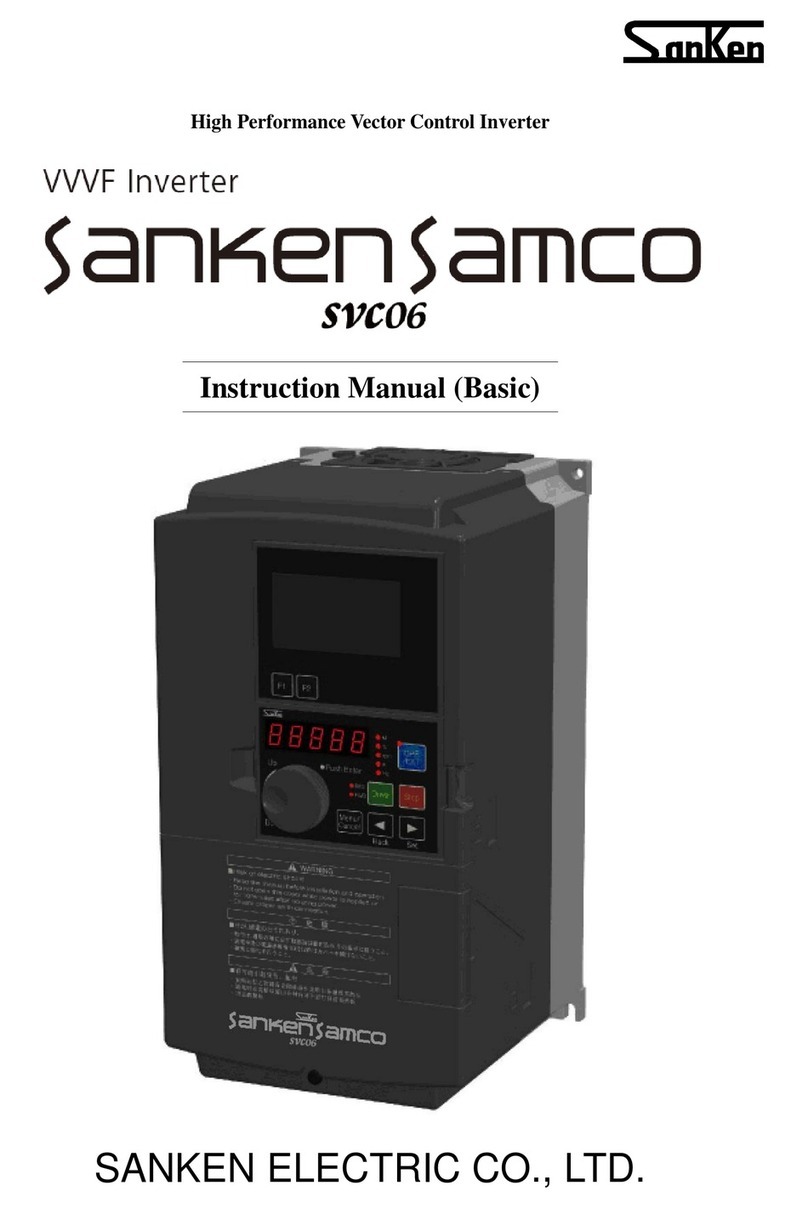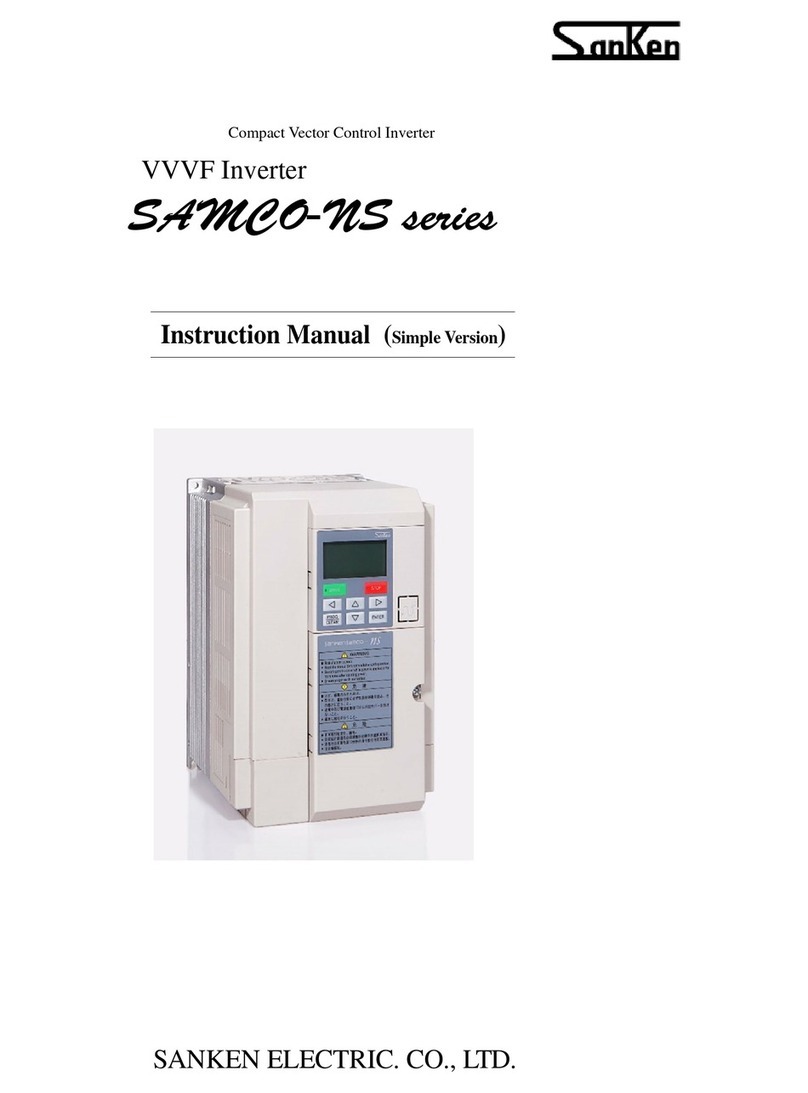
- 3 -
6. Operation.................................................................................. - 33 -
6-1 Operation steps ......................................................................... - 33 -
6-2 Test run ................................................................................ - 34 -
6-2-1 Confirmation before power input .................................................. - 34 -
6-2-2 Confirmation after power input ................................................... - 34 -
6-2-3 Basic setting (1) ................................................................ - 34 -
6-2-4 Motor control setting ............................................................ - 34 -
6-2-5 Basic setting (2) ................................................................ - 35 -
6-2-6 Motor parameter auto tuning ...................................................... - 35 -
6-2-7 Basic setting (3) ................................................................ - 38 -
6-3 Special functions ....................................................................... - 40 -
6-3-1 JOG operation .................................................................... - 40 -
6-3-2 Hold operation ................................................................... - 41 -
6-3-3 Notes on free run stop terminal (MBS) ............................................ - 41 -
7. Function Code .................................................................................... - 44 -
7-1 Representation and Description of Function Codes ........................................ - 44 -
7-2 Function Code List ...................................................................... - 44 -
7-3 Description of Functions ................................................................ - 62 -
7-3-1 Basic functions .................................................................. - 62 -
7-3-2 Input/Output-Related Functions ................................................... - 89 -
7-3-3 System functions ................................................................ - 100 -
7-3-4 Special functions ............................................................... - 109 -
7-3-5 Multi-speed Function ............................................................ - 115 -
7-3-6 PID Function .................................................................... - 128 -
7-3-7 Communication function .......................................................... - 143 -
7-3-8 Motor parameters ................................................................ - 145 -
7-3-9 Vector Speed Control ............................................................ - 147 -
7-3-10 Torque control .................................................................. - 155 -
7-3-11 Single-Inverter Multi-Pump Water Supply ......................................... - 161 -
7-4 Serial Communication Function .......................................................... - 164 -
7-4-1 Outline ......................................................................... - 164 -
7-4-2 Terminal functions and wiring methods ........................................... - 165 -
7-4-3 Operation and function code setting by serial communication ..................... - 165 -
7-4-4 Communication with dedicated protocol (SANKEN communication protocol) ........... - 167 -
7-4-5 Programming Design .............................................................. - 168 -
7-4-6 ModBus-RTU Communication ........................................................ - 181 -
8. Protection & Error Function............................................................... - 190 -
8-1 Operation error ........................................................................ - 190 -
8-2 Conflict & interference error .......................................................... - 190 -
8-3 Warning Status ......................................................................... - 194 -
8-4 Alarm Status ........................................................................... - 194 -
9. Fault Analysis............................................................................ - 198 -
10.Maintenance & Inspection ........................................................................ - 199 -
10-1 Precautions on Checking and Maintenance ................................................ - 199 -
10-2 Inspection Items ....................................................................... - 199 -
10-3 Part Replacement ....................................................................... - 200 -
10-4 Megger Test ............................................................................ - 200 -
10-5 Electrical measurement of main circuit ................................................. - 201 -
11.Specification Parameters ........................................................................ - 203 -
11-1 Standard specification ................................................................. - 203 -
11-2 Inverter general specification ......................................................... - 204 -
11-3 Communication function specification ................................................... - 205 -
11-4 Storage Environment .................................................................... - 205 -
12.Overall Dimension ............................................................................... - 206 -
12-1 Mainbody dimension ..................................................................... - 206 -
12-2 Operation panel ........................................................................ - 206 -






























